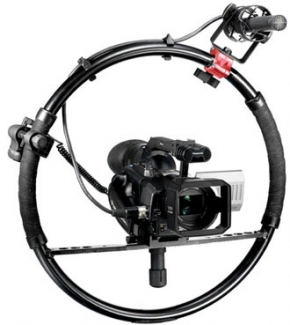
"Eating healthily is a challenge but doing it on a budget makes it especially difficult."
Our assignment was to create a 3 minute video on cooking healthily for cheap, aimed at students and "funky." It should be under £6, entertaining and memorable.
I was in a group with Ed, Keiran and Mandy.

we decided to use two Panasonic cameras, for different purposes. One was used for a Wide Angle shot, in which we captured most  of the "action" from the presenter. We used our other camera in order to get the Close Up shots. We thought this was very important as we could cut and change between cameras to get our desired shots, and I definately think it works.
of the "action" from the presenter. We used our other camera in order to get the Close Up shots. We thought this was very important as we could cut and change between cameras to get our desired shots, and I definately think it works.
We also decided upon using a presenter as our secondary subject, (the food obviously being the first!) We thought this gave some character to the piece, making it more watchable and relatable.
I was assigned the role of presenter for this project, and I really enjoyed doing it, (don't ask why I'm australian!) I really got a feel of what it would be like

We picked a delicious healthy meal which came to about £5.80 (perfect!) And it was actually really tasty... the reactions for our end are not fake!

We played back what she had edited on the Friday and it was hilarious! Only problem was that it got to about 2 mins 30 and i hadn't even chopped the onions let along cook the meal. So Mandy and I started again and decided to really tighten up the shots.. short and sweet.
We also decided upon mostly CU's Eg CU chopping the Veg, CU of the cooker etc. The main reason we thought of this was because it seems to flow a lot better, and also so I can do a Voice over when the editing's finished. I'll try and stick to what I said there and then, but recording over the images straight into final cut will make everything seem a lot more "polished."
So for our rough draft I thought it's definately coming along nicely. We'll edit it more with Ed and Keiran, add some music, title sequences etc. However we liked the footage so much, we're going to do an extended v
But for the purpose of this blog; are 3 minute edited version is below!...
(I accidentely saved it onto Tom Charnley's Vimeo account...)!!
Sandra's Kitchen DELIGHTS from Tom Charnley on Vimeo.
I thought the final version was really good. Mandy, Ed and Keiran were wicked on the camera's and found it all flowed very smoothly and we got on really well as a team. The voice over works well over the images which is what we were after. The only problem with this version is that we had trouble uploading it onto our assessment Wiki as the file was too large, which then resulted in us compressing the piece down too much so (as you can see) the shots are quite distorted. But I loved this task!
...And the Sweet Potato Veggie Curry was delicious! (Slight changes in ingrediants compared to ours but still good!)











